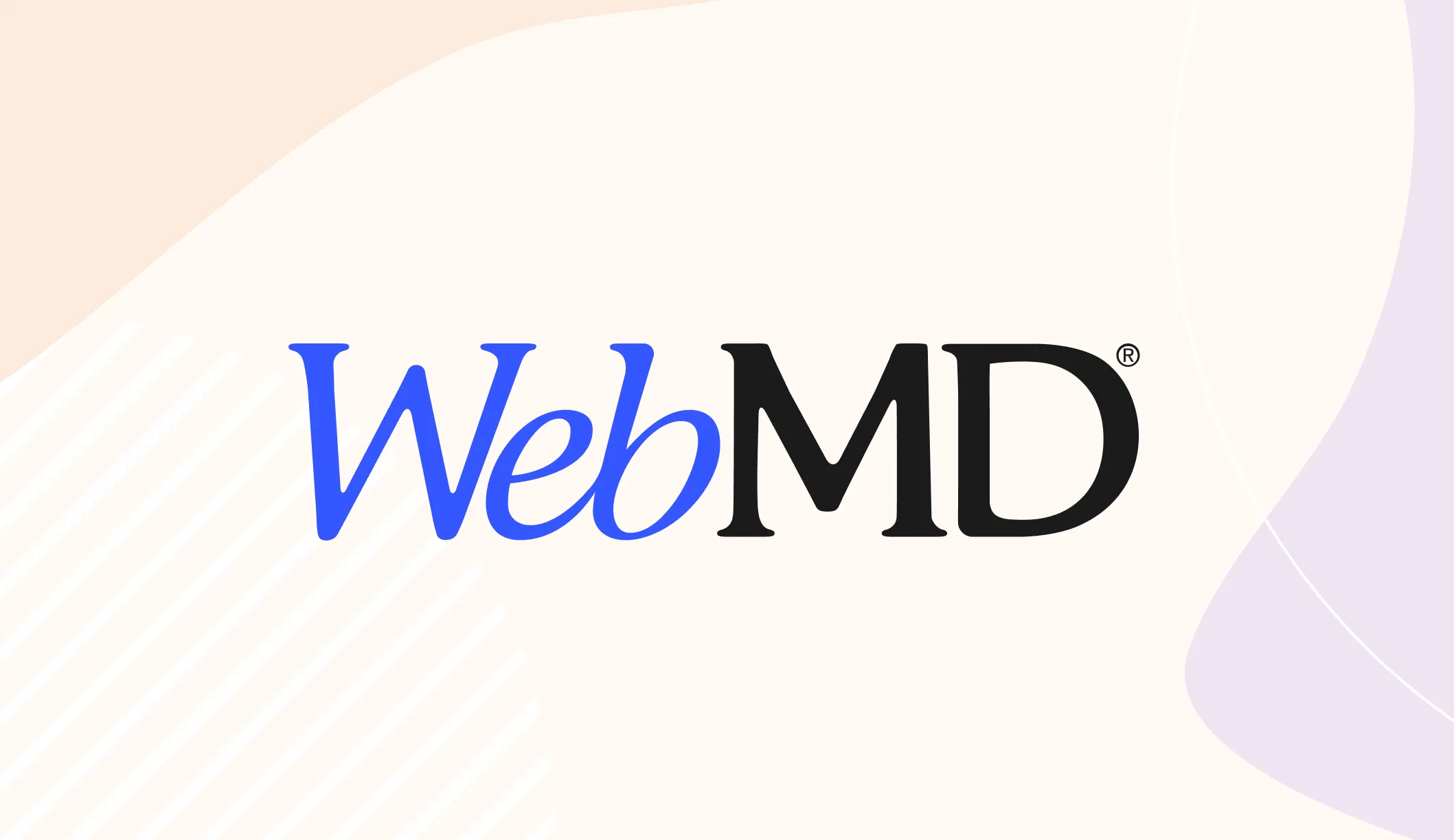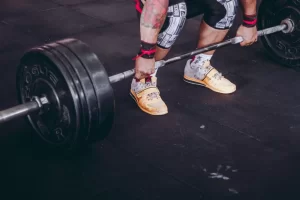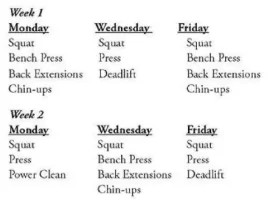Strategery
Regular Contributor
FASTLANE INSIDER
LEGACY MEMBER
MEMBER
Read Rat-Race Escape!
Read Fastlane!
Read Unscripted!
- Joined
- Jun 25, 2019
- Messages
- 321
Rep Bank
$2,075
$2,075
User Power: 301%
I recently gave a talk about fitness and what has worked for me in front of a group of entrepreneurs. Here it is transcribed for you, with a few extras added at the very end. Enjoy! ~10 min read
Is average fitness advice enough to keep us healthy over the long haul? Should we be doing more, or something different entirely? Entrepreneurs are busy people who need the most effective methods… in marketing, with sales, logistics… why should exercise be any different? If you want to keep the ability to wipe your own a$$ when you’re 70, keep reading.
My doctor is a good guy. But when I’ve asked him in the past about strength training (mostly to amuse myself), his answer is always predictable… “you just need a light resistance program. Use bands. Don’t push too hard. Take it easy.” Sometimes I think he’s just kind of a nerd, and is unique. I thought that until I did some digging on strength levels in the US.

 pubmed.ncbi.nlm.nih.gov
pubmed.ncbi.nlm.nih.gov
In the above study, grip strength was tested in young men in 1985 and again in 2016, and what they found was that (no surprise) millennials are getting weaker. Less people work physical jobs these days? I suppose it might be ok if it were something small, like it were only a decrease in grip strength. But another statistic from the CDC, summed up in the following article makes me think there’s a more systemic problem at hand..
Most Americans Too Fat, Too Dumb for the Military • The Havok Journal
“Most Americans Too Fat, Too Dumb for the Military”
Ouch. We’ve been hearing about the “obesity epidemic” for a long time now, but then they went and called us stupid. Why do statistics have to be so mean?
I dug around some more, maybe to confirm my biases on strength. Sadly I wasn’t disappointed..

In the above study, researchers concluded that the only way to retain the ability to walk when we’re older is by keeping enough muscle mass and strength in our legs/hips. But can we keep that strength and muscle by following basic guidelines? If the bare minimum is effective for retaining strength, then why isn’t it working?
A little about me… I have a bachelors in Athletic Training, which is a field of sports medicine, primarily concerned with athletic injury, treatment and prevention. I’m not currently working as an AT, but due to my obsession with sport (particularly jiu jitsu, boxing, snowboarding, rockclimbing, CrossFit) and my previous job (heavy equipment operator for a recycling center), I’ve been a great case study for the last decade or so. Before I was ever interested in business, in my twenties, I was only concerned with physical capabilities that directly impacted whatever sport I was doing at the time. I would do things so much that they would leave me debilitated at times… I’ve got a list of chronic injuries that hurts to look at. And up until a few years ago, those same injuries were my excuse for not lifting weights and not taking care of myself. Back then, everything that I did in preparation for physically demanding sports was… you guessed it…AVERAGE.
So how do we avoid average?
Disclaimer: I’m not responsible if you get hurt doing something stupid. Everything I talk about/recommend should be carefully considered and cleared with your doctor (who won’t be thrilled about your decision).
I can almost guarantee if you’re reading this, you want to add quality years to your life. You probably would like to do your activity/sport/hobby better. And for longer. Or maybe I have it completely wrong and you want to be a motherfucking freak-beast athlete NOW. Either way, my recommendation can get you what you want, just keep reading and let me define a few things first so we’re on the same page. Then I’ll tell you what to do.
I’m going to give you another statistic that I want you to keep in the back of your mind while reading:

 www.webmd.com
www.webmd.com
After about the 30 years of age, physically inactive people lose between 3-5% of their muscle mass per decade which is roughly 0.5 lbs of muscle per year, and after 25, people will gain an average of 1.5lbs of fat per year. Even active people will experience some muscle loss in their lives. So think about it. Whether you exercise or not, your clock is ticking toward fragility.
Ok, so what is average fitness? What makes up the bare minimum? For absolute minimum standards,
Your hips!
Your hips are the area where strength matters the most, both for longevity, and optimum performance.
So if those criteria are average, what we want to know is how do we both satisfy the minimum, AND train for peak performance. All at once. Efficiently… Can we?
I found this in a few different spots on the interwebs, and there’s a few variations, but they all look alike. They say that the components of fitness are:
Now, what do we not see on this list? … 6-pack abs is NOT a measure of fitness levels. Don’t believe me? Go to a jiu jitsu class… some of the guys who never gas out are a little chubby.
Out of all of these, the one that is trained very poorly, whether folks fall into the “health nut” category or especially with couch potatoes is STRENGTH. The way we, collectively, go about getting stronger is inefficient, and really pretty damn silly. Sadly, by doing this, we limit our ability to improve all the other areas on this list.
Let’s take two things on the list that most people don’t think would be improved by strength training: cardio and stamina. Both are improved with strength training by understanding an idea called sub-maximal effort. Every repetitive motion, like rowing or running or swinging a tennis raquet requires a certain amount of effort to do. If the muscles that perform that action are stronger, less effort is required to do the same task. Now there’s an upper limit on this… if you make big, fluffy body builder muscles, they will impact your ability to do fast motions. And obviously a powerlifter doesn’t have the ideal body to tackle a rock climb. But we’re not talking about that extreme. Let’s keep going.
What about power, agility, and speed? We’ll learn about those in a minute
Coordination, balance, accuracy? Are those affected by strength? Absolutely. Again, it goes back to sub-maximal effort. The stronger the muscles involved, the easier the movement becomes to perform.
So that leaves flexibility as the one component that isn’t positively impacted by strength gain. In fact, the bigger the muscle, the more you decrease your range of motion initially. But we can mitigate that consequence with the way we train as you’ll see.
So that leaves us with what do we actually do to be most effective in these components of fitness?
My model for this is as follows: We need to satisfy high levels of competency for
Power is work, as a function of time. For our purposes, it’s the muscles’ ability to instantaneously do work. I have a barbell, and in one motion, I’m going to lift it from the ground up to my shoulders… that’s a power clean. Why do we care about that? Is that just for athletes?
Important concept:
Let’s say that I’m walking down an icy sidewalk. Now I practice what I preach and I lift and do power movements all the time. I slip and either I fall but I’m protected by muscle mass and developed bone density, or I’m able to brace in some way and keep from falling. Little harm is done. Power is what allows me to quickly shift my center of gravity so I don’t fall. But now let’s say I’m old and frail. In this scenario, I’ve never lifted weights. My muscles are strings and my bones are brittle. I slip on the ice, and I break my hip, because I couldn’t react quickly enough, and I don’t have the body structure to take the impact. Well, that’s sadly not the end of it. A broken hip for an older person can nearly be a death sentence. They’re going to be unable to walk for a long time. A longer time than one of us with the same injury. While they aren’t able to walk, their muscles atrophy worse. Remember the statistic I gave you earlier? After a certain age, inactive people lose about 1/2 lb of muscle and gain 1.5 lbs of fat per year. But those people are still walking. What happens to that statistic when you can’t walk? A little bit of muscle and power could have made this a much better scenario.
What about mobility? Mobility is the joint’s ability to go through an entire range of motion. That’s not the same as flexibility. Flexibility is how far a muscle can stretch, which can impact mobility. Since it’s hindered to some level by strength training, at least at the upper levels, we have to actively improve mobility. I’m going to give a general recommendation for it later, but I don’t have a ton to say about it.. in this post anyway.
Exercise Recommendations
So all of that is the why we train, and what we need to focus on to impact longevity and performance. Now I want to get closer to specific exercises, and this is where the direction taken will depend more on the individual… basically, what you’re willing to do.
I want to address optimized strength training, since I personally think it’s the way everyone should train. Now I understand a few of you guys are nomadic, or just super busy with your business and life, but I believe everyone who is capable should prioritize this type of training at least once in your life (and it’s going to take about a year to complete, maybe longer). Why? Because it’s effects don’t go away quickly, and it can be maintained easily later. What’s it look like?
Find out next time, in part 2/3, where you'll learn what programs I've used for peak performance.
Is average fitness advice enough to keep us healthy over the long haul? Should we be doing more, or something different entirely? Entrepreneurs are busy people who need the most effective methods… in marketing, with sales, logistics… why should exercise be any different? If you want to keep the ability to wipe your own a$$ when you’re 70, keep reading.
My doctor is a good guy. But when I’ve asked him in the past about strength training (mostly to amuse myself), his answer is always predictable… “you just need a light resistance program. Use bands. Don’t push too hard. Take it easy.” Sometimes I think he’s just kind of a nerd, and is unique. I thought that until I did some digging on strength levels in the US.

Comparative study of millennials' (age 20-34 years) grip and lateral pinch with the norms - PubMed
IV.
In the above study, grip strength was tested in young men in 1985 and again in 2016, and what they found was that (no surprise) millennials are getting weaker. Less people work physical jobs these days? I suppose it might be ok if it were something small, like it were only a decrease in grip strength. But another statistic from the CDC, summed up in the following article makes me think there’s a more systemic problem at hand..
Most Americans Too Fat, Too Dumb for the Military • The Havok Journal
“Most Americans Too Fat, Too Dumb for the Military”
Ouch. We’ve been hearing about the “obesity epidemic” for a long time now, but then they went and called us stupid. Why do statistics have to be so mean?
I dug around some more, maybe to confirm my biases on strength. Sadly I wasn’t disappointed..
Slower walking speed in the elderly may be explained by loss of muscle strength and mass
Research has found that elderly people walk at a slower speed and tire more quickly because of loss of strength and mass in leg muscles. Using computer simulations they found that these physiological changes explain the slower walking speed preferred by the elderly, and that a focus on building...
www.sciencedaily.com
In the above study, researchers concluded that the only way to retain the ability to walk when we’re older is by keeping enough muscle mass and strength in our legs/hips. But can we keep that strength and muscle by following basic guidelines? If the bare minimum is effective for retaining strength, then why isn’t it working?
A little about me… I have a bachelors in Athletic Training, which is a field of sports medicine, primarily concerned with athletic injury, treatment and prevention. I’m not currently working as an AT, but due to my obsession with sport (particularly jiu jitsu, boxing, snowboarding, rockclimbing, CrossFit) and my previous job (heavy equipment operator for a recycling center), I’ve been a great case study for the last decade or so. Before I was ever interested in business, in my twenties, I was only concerned with physical capabilities that directly impacted whatever sport I was doing at the time. I would do things so much that they would leave me debilitated at times… I’ve got a list of chronic injuries that hurts to look at. And up until a few years ago, those same injuries were my excuse for not lifting weights and not taking care of myself. Back then, everything that I did in preparation for physically demanding sports was… you guessed it…AVERAGE.
So how do we avoid average?
Disclaimer: I’m not responsible if you get hurt doing something stupid. Everything I talk about/recommend should be carefully considered and cleared with your doctor (who won’t be thrilled about your decision).
I can almost guarantee if you’re reading this, you want to add quality years to your life. You probably would like to do your activity/sport/hobby better. And for longer. Or maybe I have it completely wrong and you want to be a motherfucking freak-beast athlete NOW. Either way, my recommendation can get you what you want, just keep reading and let me define a few things first so we’re on the same page. Then I’ll tell you what to do.
I’m going to give you another statistic that I want you to keep in the back of your mind while reading:

Sarcopenia With Aging
Sarcopenia is the gradual loss of muscle mass that can affect people in their 30s and beyond. WebMD explains its symptoms, causes, diagnosis, and treatments.
After about the 30 years of age, physically inactive people lose between 3-5% of their muscle mass per decade which is roughly 0.5 lbs of muscle per year, and after 25, people will gain an average of 1.5lbs of fat per year. Even active people will experience some muscle loss in their lives. So think about it. Whether you exercise or not, your clock is ticking toward fragility.
Ok, so what is average fitness? What makes up the bare minimum? For absolute minimum standards,
- the ability to walk
- The ability to get in/out of a seated position
- Ability to lift objects
Your hips!
Your hips are the area where strength matters the most, both for longevity, and optimum performance.
So if those criteria are average, what we want to know is how do we both satisfy the minimum, AND train for peak performance. All at once. Efficiently… Can we?
I found this in a few different spots on the interwebs, and there’s a few variations, but they all look alike. They say that the components of fitness are:
- Cardiovascular/respiratory endurance
- Stamina
- Strength
- Flexibility
- Power
- Speed
- Coordination
- Agility
- Balance
- Accuracy
Now, what do we not see on this list? … 6-pack abs is NOT a measure of fitness levels. Don’t believe me? Go to a jiu jitsu class… some of the guys who never gas out are a little chubby.
Out of all of these, the one that is trained very poorly, whether folks fall into the “health nut” category or especially with couch potatoes is STRENGTH. The way we, collectively, go about getting stronger is inefficient, and really pretty damn silly. Sadly, by doing this, we limit our ability to improve all the other areas on this list.
Let’s take two things on the list that most people don’t think would be improved by strength training: cardio and stamina. Both are improved with strength training by understanding an idea called sub-maximal effort. Every repetitive motion, like rowing or running or swinging a tennis raquet requires a certain amount of effort to do. If the muscles that perform that action are stronger, less effort is required to do the same task. Now there’s an upper limit on this… if you make big, fluffy body builder muscles, they will impact your ability to do fast motions. And obviously a powerlifter doesn’t have the ideal body to tackle a rock climb. But we’re not talking about that extreme. Let’s keep going.
What about power, agility, and speed? We’ll learn about those in a minute
Coordination, balance, accuracy? Are those affected by strength? Absolutely. Again, it goes back to sub-maximal effort. The stronger the muscles involved, the easier the movement becomes to perform.
So that leaves flexibility as the one component that isn’t positively impacted by strength gain. In fact, the bigger the muscle, the more you decrease your range of motion initially. But we can mitigate that consequence with the way we train as you’ll see.
So that leaves us with what do we actually do to be most effective in these components of fitness?
My model for this is as follows: We need to satisfy high levels of competency for
- Musculoskeletal ability,
- cardiovascular conditioning (I know I said it’s effected by strength training, but I still think it should be trained),
- diet, and
- mental health. For this article, we’re only going to focus on musculoskeletal ability, since it’s widely trained improperly. So what is it?
- Strength
- Power
- Mobility
Power is work, as a function of time. For our purposes, it’s the muscles’ ability to instantaneously do work. I have a barbell, and in one motion, I’m going to lift it from the ground up to my shoulders… that’s a power clean. Why do we care about that? Is that just for athletes?
Important concept:
Let’s say that I’m walking down an icy sidewalk. Now I practice what I preach and I lift and do power movements all the time. I slip and either I fall but I’m protected by muscle mass and developed bone density, or I’m able to brace in some way and keep from falling. Little harm is done. Power is what allows me to quickly shift my center of gravity so I don’t fall. But now let’s say I’m old and frail. In this scenario, I’ve never lifted weights. My muscles are strings and my bones are brittle. I slip on the ice, and I break my hip, because I couldn’t react quickly enough, and I don’t have the body structure to take the impact. Well, that’s sadly not the end of it. A broken hip for an older person can nearly be a death sentence. They’re going to be unable to walk for a long time. A longer time than one of us with the same injury. While they aren’t able to walk, their muscles atrophy worse. Remember the statistic I gave you earlier? After a certain age, inactive people lose about 1/2 lb of muscle and gain 1.5 lbs of fat per year. But those people are still walking. What happens to that statistic when you can’t walk? A little bit of muscle and power could have made this a much better scenario.
What about mobility? Mobility is the joint’s ability to go through an entire range of motion. That’s not the same as flexibility. Flexibility is how far a muscle can stretch, which can impact mobility. Since it’s hindered to some level by strength training, at least at the upper levels, we have to actively improve mobility. I’m going to give a general recommendation for it later, but I don’t have a ton to say about it.. in this post anyway.
Exercise Recommendations
So all of that is the why we train, and what we need to focus on to impact longevity and performance. Now I want to get closer to specific exercises, and this is where the direction taken will depend more on the individual… basically, what you’re willing to do.
I want to address optimized strength training, since I personally think it’s the way everyone should train. Now I understand a few of you guys are nomadic, or just super busy with your business and life, but I believe everyone who is capable should prioritize this type of training at least once in your life (and it’s going to take about a year to complete, maybe longer). Why? Because it’s effects don’t go away quickly, and it can be maintained easily later. What’s it look like?
Find out next time, in part 2/3, where you'll learn what programs I've used for peak performance.
Dislike ads? Become a Fastlane member:
Subscribe today and surround yourself with winners and millionaire mentors, not those broke friends who only want to drink beer and play video games. :-)
Membership Required: Upgrade to Expose Nearly 1,000,000 Posts
Ready to Unleash the Millionaire Entrepreneur in You?
Become a member of the Fastlane Forum, the private community founded by best-selling author and multi-millionaire entrepreneur MJ DeMarco. Since 2007, MJ DeMarco has poured his heart and soul into the Fastlane Forum, helping entrepreneurs reclaim their time, win their financial freedom, and live their best life.
With more than 40,000 posts packed with insights, strategies, and advice, you’re not just a member—you’re stepping into MJ’s inner-circle, a place where you’ll never be left alone.
Become a member and gain immediate access to...
- Active Community: Ever join a community only to find it DEAD? Not at Fastlane! As you can see from our home page, life-changing content is posted dozens of times daily.
- Exclusive Insights: Direct access to MJ DeMarco’s daily contributions and wisdom.
- Powerful Networking Opportunities: Connect with a diverse group of successful entrepreneurs who can offer mentorship, collaboration, and opportunities.
- Proven Strategies: Learn from the best in the business, with actionable advice and strategies that can accelerate your success.
"You are the average of the five people you surround yourself with the most..."
Who are you surrounding yourself with? Surround yourself with millionaire success. Join Fastlane today!
Join Today




